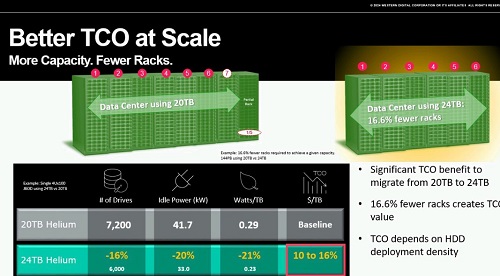-By Ghassan Azzi, Sales Director, Africa at Western Digital
If we think of all of the data stored looking like an iceberg, flash storage is everywhere you look above the iceberg’s surface — from our phones to our kitchen gadgets. It powers autonomous vehicles, undersea drones, remote surgery, and other incredible use cases. But flash storage doesn’t always stand alone. It has an important partner: hard disk drives (HDDs) that lurk massively beneath the surface.
While flash storage may get the headlines, HDDs are the unsung heroes of the industry, storing the vast quantities of data in the cloud being generated and created by new and existing endpoints from industries, connected devices, digital platforms, artificial intelligence (AI), machine learning (ML) and large language model (LLM) innovations, autonomous machines and more. This relentless creation of data ultimately finds its way to the cloud, which is underpinned by continued advancements in HDDs.
The flashy surface
It’s easy to see why flash storage gets all the attention. Flash is fast, small, tough and can go just about anywhere our imagination takes us — whether it’s in outer space or deep underwater.
Specifically, advancements in NAND flash storage are pushing capacity to incredible ranges, making personal devices, IoT devices, drones and robots more powerful than ever while keeping form factors manageable. An incredible amount of data can now be processed on the edge of the network, speeding autonomous decision making and other automated processes out in the field.
At the same time, high-performance transports such as NVMe™, NVMe-oF™, and UFS are making it easier to speed up the transfer of data between devices or between a device and the cloud. This high-speed connectivity allows devices to talk to each other more fluently, share critical information and perform carefully orchestrated operations much more efficiently and effectively. It’s this combination of performance and form factor that make flash storage ideal for these types of edge cases.
The unseen depths
According to IDC (Global StorageSphere Forecast, 2023-2027) – document #US50851423, June 13, 2023), HDDs power almost 80% of the cloud. HDDs are the silent workhorses of today’s storage environments. They’re optimized for mass storage and give hyperscalers, cloud service providers (CSPs) and enterprises a scalable, efficient and cost-effective option in the data center to store vast amounts of data.
New innovations in HDD technology continue to drive higher capacity, low power and performance. Conventional magnetic recording (CMR) HDDs, for example, are pushing capacity up to 24 terabytes (TB) while shingled magnetic recording (SMR) HDDs are resulting in even greater densities up to 28TB. Utilizing greater storage density results in reduced power, cooling and real estate in the data center, helping organizations lower total cost of ownership (TCO) and meet sustainability and Environmental, Social and Governance (ESG) initiatives.
Essentially, higher capacity HDDs lets businesses store the same amount of data in less space while consuming less power. Even an extra 15% or 20% of capacity in a drive is valuable and helps cloud providers meet the insatiable demand for storage.
In the cloud world, customers typically transition to higher-capacity hard drives as soon as new sizes become available, which make HDD vendor efforts to increase storage density very important. Why does high-capacity matter to customers? From a numbers’ perspective, higher-capacity drives continue to deliver improvements to a storage solution’s TCO.
For example, compare 144 petabytes (PB) of total storage being delivered through 42U rack servers that can hold 100 drives each. The comparison in this example is that using 20TB drives, it would take 7.2 racks to deliver the 144 PBs but by using 24TB HDDs, it would only require six full racks. So even when you factor in the higher cost of the 24TB drives and after accounting for the improved power-efficiency of the 24TB drives, the total cost of implementing this solution when you combine both CapEx and OpEx, can be reduced by 10% to 16%.
These innovations will continue to make HDDs the ideal storage solution for data centers and cloud environments that run today’s innovative applications at scale.
A symbiotic relationship: Tiered storage working in harmony
The ability for storage to enable new innovations and use cases such as AI/ML, LLMs and Internet of Things (IoT) lies in the harmonious interplay between flash and HDDs. In simplistic terms, device manufacturers can use flash to store frequently accessed or performance-critical “hot” data for fast retrieval while less frequently accessed “warm” or “cold” data can reside on more cost-efficient HDD media.
This tiered approach optimizes capacity and performance while balancing costs in the long term, working well for today’s innovative applications. It’s OK for flash to get all the attention as long as we remember that HDDs remain the vast foundation of the storage world.


Comment here